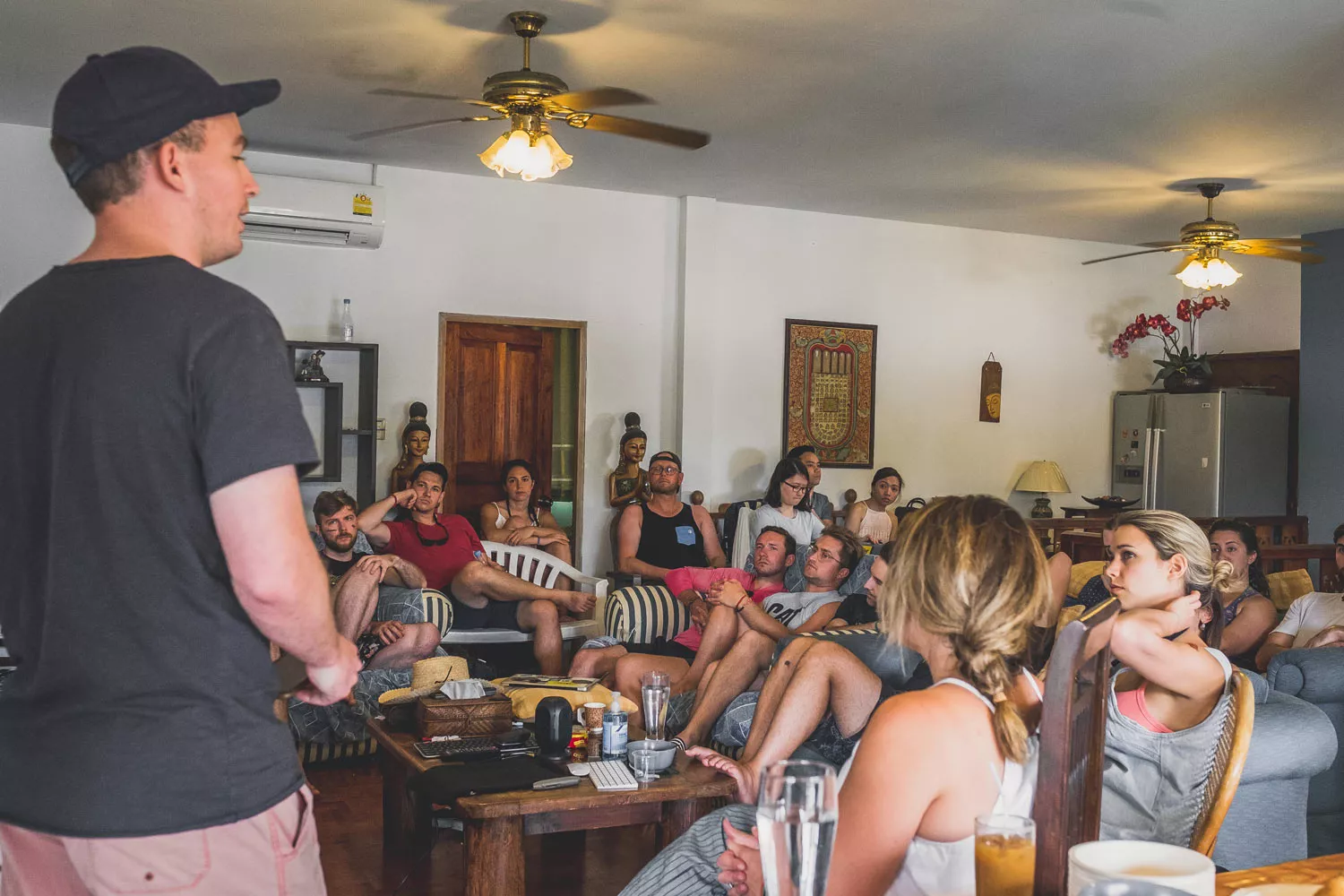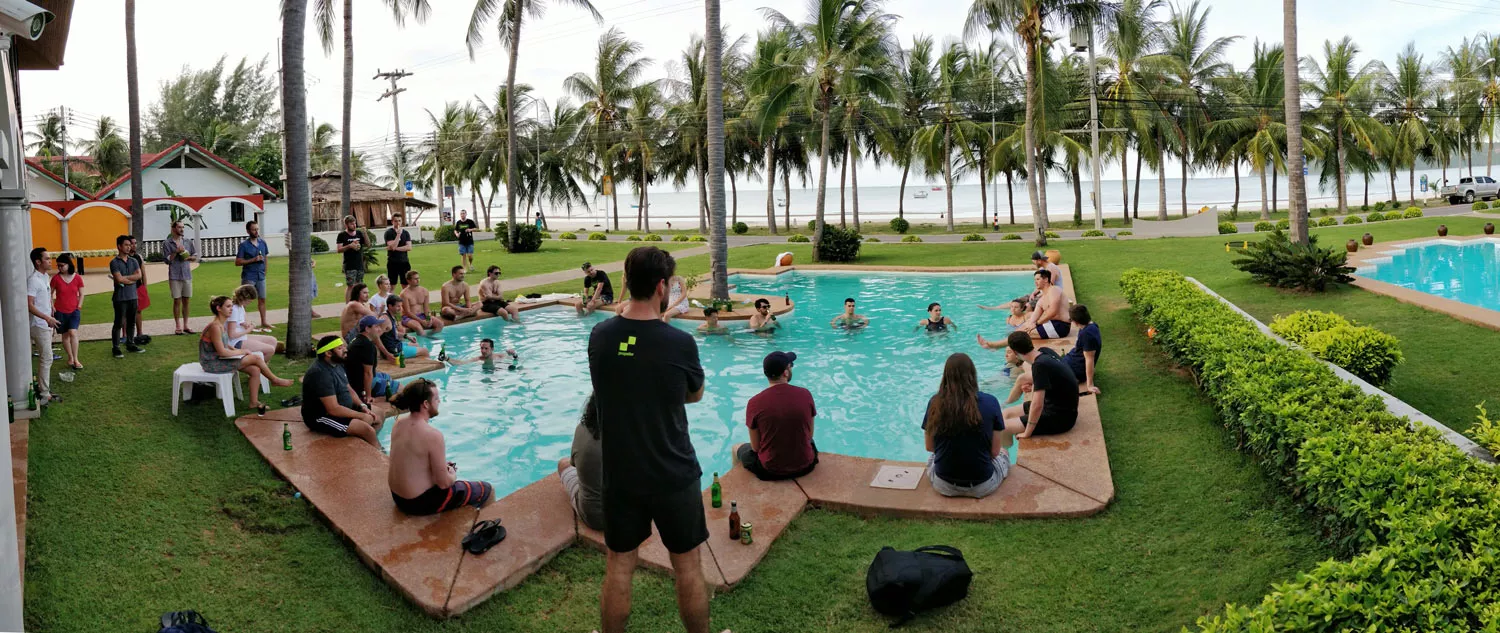Get The Most Out Of Your Company Retreat
Early last month, all 50 Propeller employees traveled to Sam Roi Yot, Thailand, from seven different countries to spend a week hacking, workshopping, and beaching for our third—and by far most successful—company retreat.
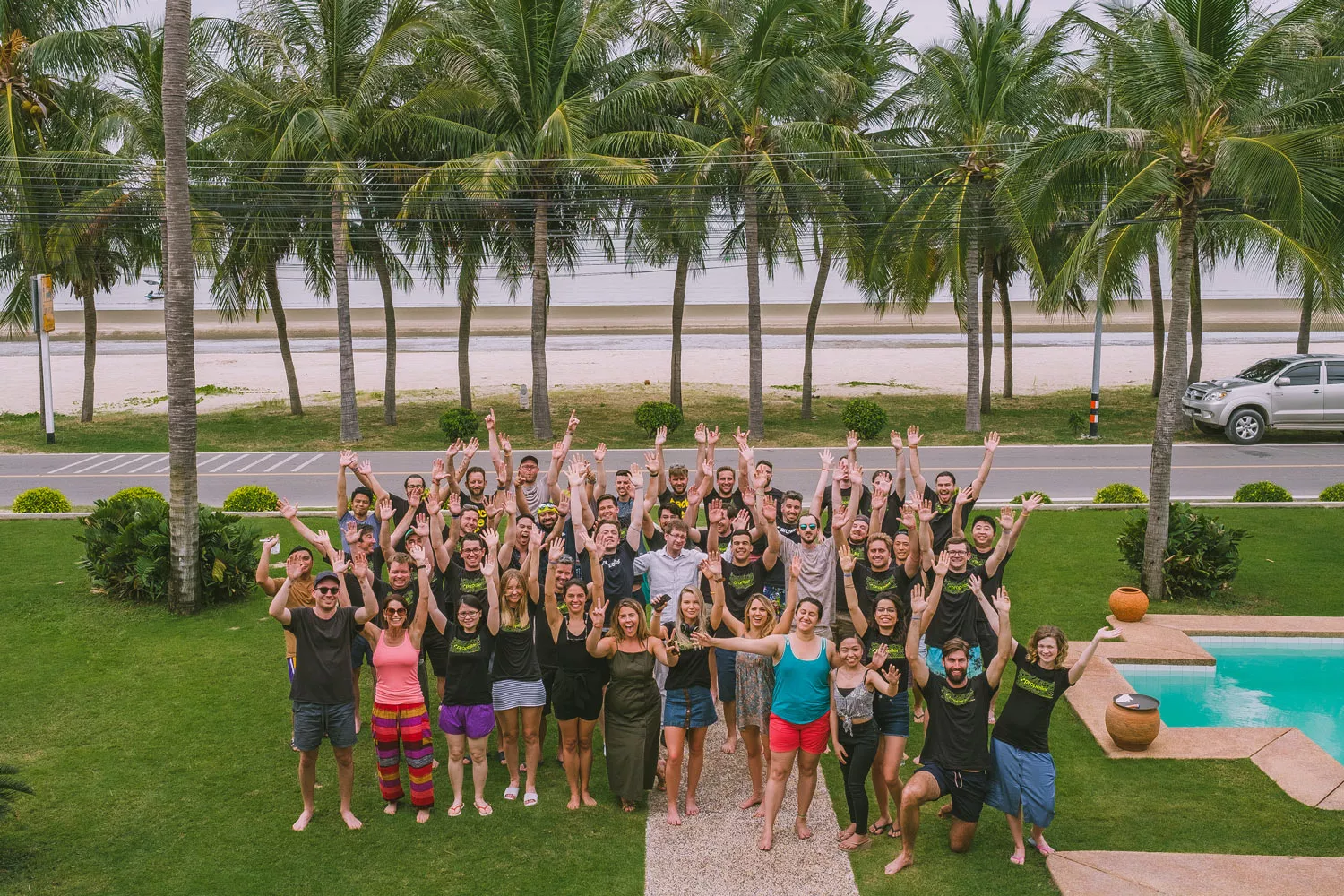
We wanted to share some tips, tools, and learnings to help you organize and get the most out of your own retreat. We don’t claim to have figured out the complete recipe for success, but we’ve made good decisions (and a couple of bad ones) that anyone can learn from.
Why have a retreat in the first place?
Some things are just better in person. For Propeller, it took us finally admitting the truth: we’re a remote company. Our two offices in Sydney, Australia, and Denver, Colorado, form the main hubs, but beyond those, our people work in the Philippines, New York City, Canada, Sweden, the Netherlands, Poland, and California.
Seeing our teammates in person is fairly rare, but a reward in itself. This Thailand trip was the first opportunity for some team members to meet in the flesh. Face-to-screen just can’t replace face-to-face connections. When we asked the team what their favorite part of the trip was, the majority said “bonding with remote coworkers and getting closer to my own team.” Before anyone hopped on a plane, we spent a lot of time making sure we were on the same page regarding what we wanted out of the trip: bonding with our international team, celebrating how far we’ve come, and preparing for our next chapter.
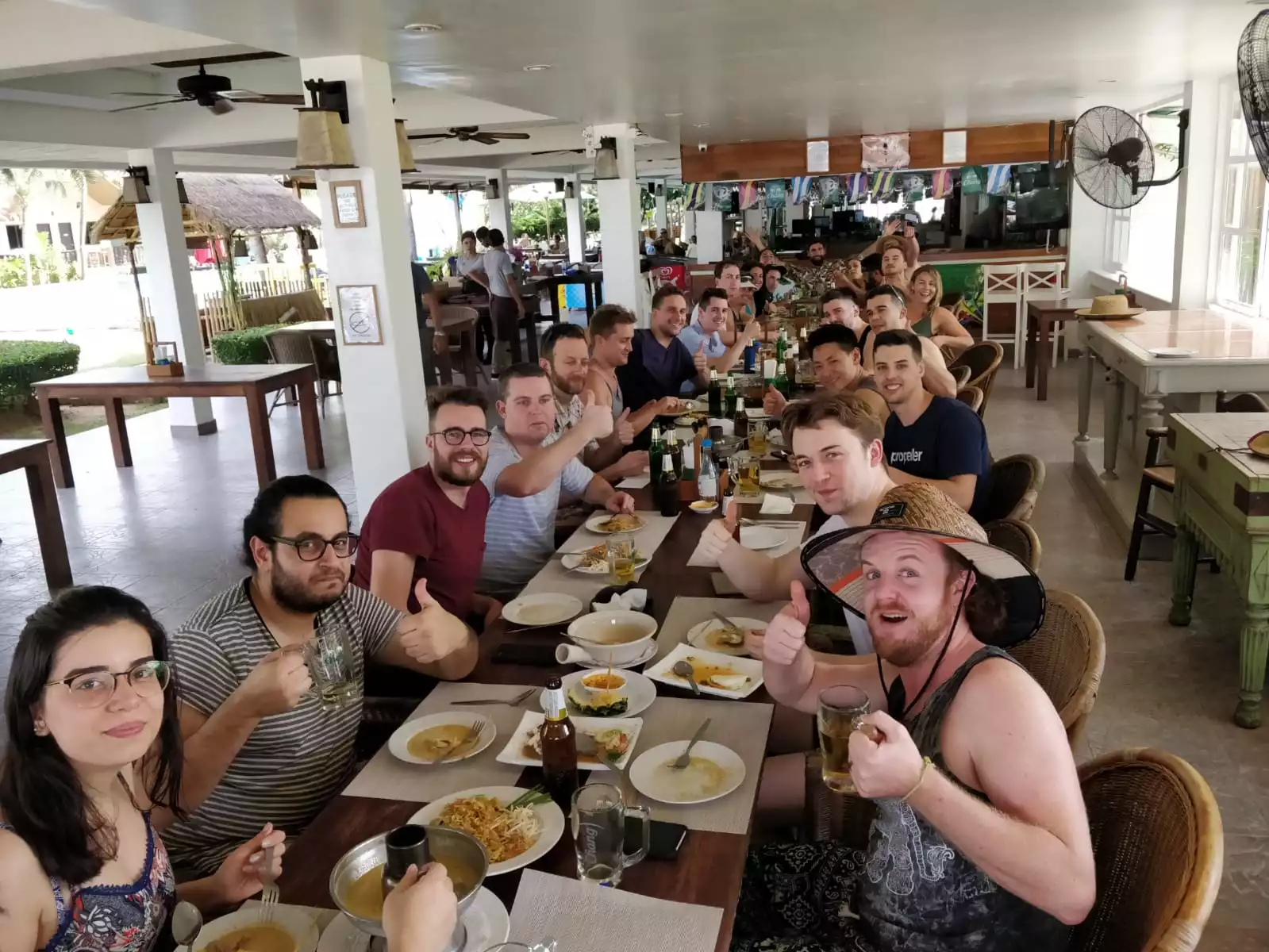
Getting things right means investing in logistics and planning
It’s self-evident, but planning everything in advance makes the actual event infinitely easier.
We picked a date far ahead of time. For duration, we took into account people’s work and personal lives, like when school holidays were and how this trip would affect end-of-month reporting. Ultimately, the best balance for our diverse team was five “working” days, one fun day, and travel days on either side, adding up to a week.
Find a location that’s affordable and accessible
Because Team Propeller is spread all over the globe, we had to balance cost and location. Our happy medium was Thailand. It’s relatively central—and affordable. Ideally, you’d want one flight connection or less and travel no more than two hours from a major airport.
Inherent large-group logistics helped narrow down our search further. It’s no joke getting beds for 50 people in the same place, or getting WiFi working for that many devices. Never underestimate the importance of WiFi. Unplugging for a week sounds good, but if you’re a software company, no WiFi means a lot of frustrated people and little real productivity. (This epitomized WiFi-gate, a lamented event from one of our previous retreats.)
Get lodging that balances personal and group space
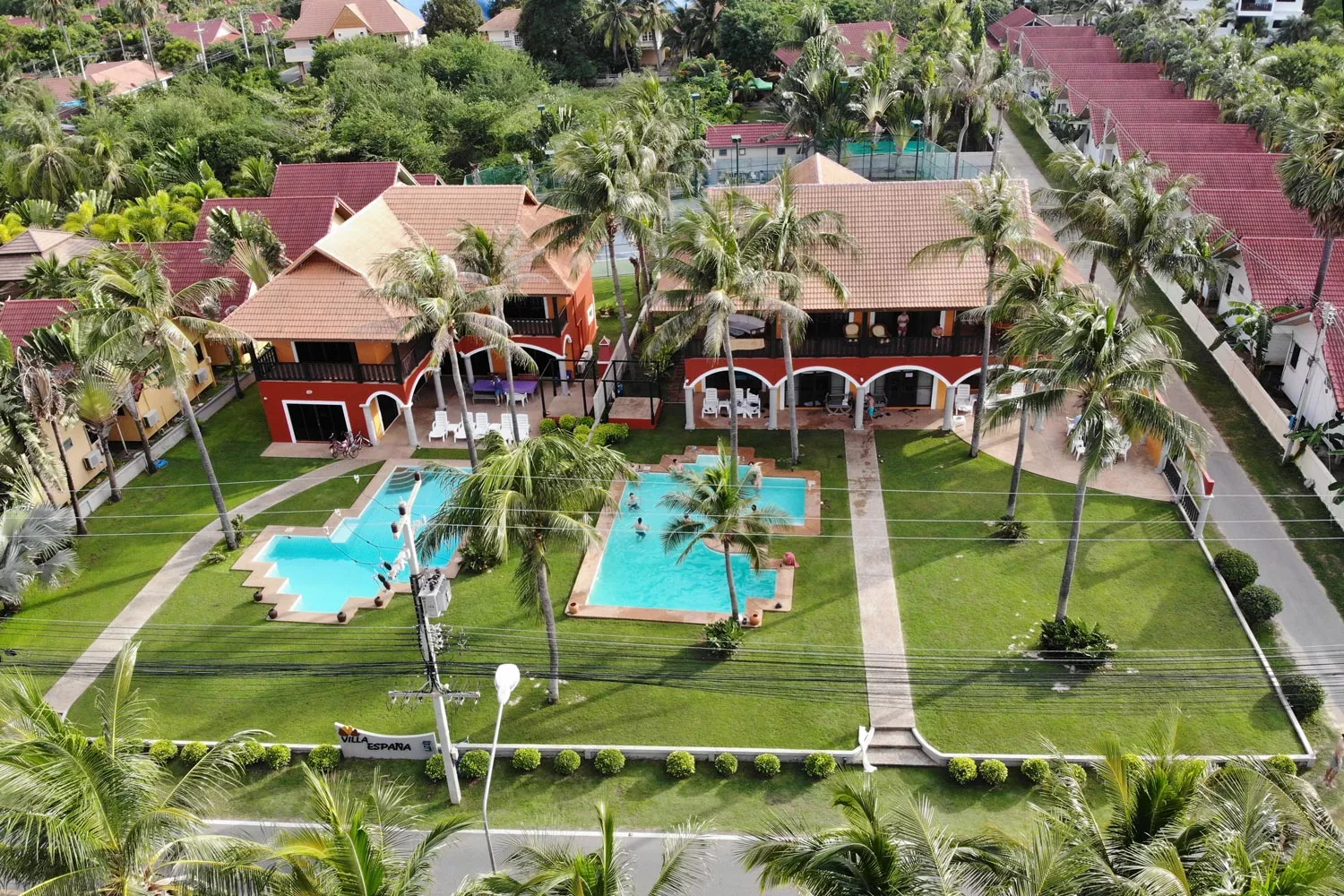
This is crucial. Propeller is a tight-knit team. Many are happy to share space. Equally, some people need time and space away from it all at the end of the day. We collected rooming and dietary preferences in a pre-retreat survey to ensure everyone got accommodations suiting them best.
Our perfect balance was a villa-and-hotel combination on the eastern coast of Thailand, three hours south of Bangkok. The Airbnb villa gave us a communal space that felt personal and homey, but the set up allowed the team to spread into the hotel next door for extra amenities and space.
Rather than traveling for tourist outings or being in an active metropolis, we found it more important to stay “home” for communal activities. When you’ve got 50 people who love to hang out together, you don’t need much else.
Embrace limited-edition swag
Everyone loves cool stickers, shirts, or koozies, but to make a retreat extra special, consider limited-edition swag. We did a limited run of a special Thailand t-shirt (seen above in our group photo).
Plan a schedule with time devoted to work and to play
You want to make the most of your time together, but not wear everyone out. We spent months planning the schedule and sent it out prior to departing. For a remote company, constructive time at a retreat is rewarding in itself.
Pick just a few areas you want to improve on. Those will guide your schedule. (We chose feedback.) We scheduled each day 9:00–5:30, with breaks for meals and pool time. Feedback workshops and colleague-led electives on productivity, public speaking, and design were spaced out by snack breaks and soccer.
We won’t give a play-by-play, but here are some activities we found to be the most worthwhile:
Give flash talks
Every Propeller employee gave a talk on the topic of their choice, four minutes max. Speaking about yourself and your life was encouraged. This was one of the most enjoyable elements of the trip, according to our post-trip survey. We learned about people’s families, hobbies, old jobs, travels, hidden talents, and more. Everyone left feeling more connected.
Discuss the vision and business
We included big-picture discussions from the founders, ranging from a look towards our future as a company to how Propeller began in the first place. The vast majority of people felt like the had a better understanding of company vision after the trip.
Take a company photo
With a decentralized workforce, this is the best time for a group picture. It’s something to remember the trip by and also serves as Propeller’s company photo throughout the year.
Do a hackathon
We solicited ideas for a one-day hackathon project beforehand. It’s easy to assume these have to be coding-related. They don’t. Open it up to any project that can be completed within your allotted time. We had projects about the nuts and bolts of the Propeller Platform, alongside ones on improving remote work and revamping our onboarding packet.
Overall, we spent more than half the day “working,” but the most important moments came from the nonwork stuff. This included volleyball games, group jam sessions, a hike to Sam Roi Yot National Park, coworker one-on-ones, watching movies, and talking around the pool.
When you get back
Getting proper feedback on how things went is just as essential as preplanning. To catch everything—and ask the right questions—a post-trip survey is your best bet. We sent ours out once everyone returned. It focused on actionable questions, like “if you could change one thing about retreats going forward, what would it be?”
It’s also easy to lose that unique retreat energy. Work has piled up, and it’s easy to say you’ll implement X retreat project or learning later. Don’t let that happen. Find ways to incorporate what you learned and use the tools you built in your day-to-day.
We made a big effort to put things into play as soon as the team got back to their standing desks. The onboarding pack and Platform tools were the obvious and easily implemented outputs, but we also practiced our improved presentation skills, productivity hacks, and fine-tuned writing techniques. And with everyone more familiar with each other, cross-team communication skyrocketed on those topics and more.
Which leads to the best takeaway: retreats catalyze cross- and internal team communication and collaboration. This means higher team productivity. Further, working from newly deepened personal relationships, comfort giving and receiving feedback increases.
We’re hiring. Join a world-class team where everyone learns something new every day. Find a role!





